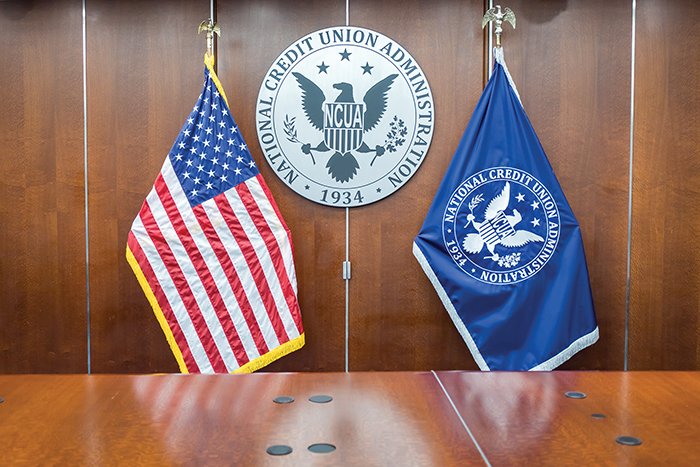WASHINGTON – In what was considered a first step in providing basic education to House Financial Services Committee staffers on check truncation and electronification before Sept. 28′s hearing on the "Check Clearing for the 21st Century Act," representatives from financial services organizations, including CUNA Assistant General Counsel Michelle Profit, and the Federal Reserve participated in a briefing on the Act on Sept. 23. Introduced by Reps. Mike Ferguson (R-N.J.) and Harold Ford (D-Tenn.) as a redraft of the Federal Reserve's "Check Truncation Act" which the agency introduced to Congress in Dec. 2001, the purpose of Check Clearing for the 21st Century Act, H.R. 5414, is "to facilitate check truncation by authorizing substitute checks, to foster innovation in the check collection system without mandating receipt of checks in electronic form, and to improve the overall efficiency of the Nation's payments system." While the legislation will reduce infrastructure costs for banks, its main benefit is it improves the efficiency of the check payment system by allowing banks to exchange checks electronically and consequently makes the collection process faster while improving consumer access to credit and protecting financials against fraud. "September 11 proved that shipping checks between banks is no longer a reliable or cost effective way of doing business.," said Ferguson in a release from the House Financial Services Subcommittee on Financial Institutions. He was referring to the problems that ensued post-9/11 when air transportation was temporarily shut down. Profit said some House Financial Services Committee staffers expressed concern that electronification could be as vulnerable to a similar type of situation as paper checks proved to be. Profit delivered a slide presentation on "The Credit Union Perspective on Check Truncation" that discussed credit unions' usage of checking and CUNA's views on the Act. Among the statistics she provided staffers were: * CUs paid 4.7 billion checks in 2002, and households using CUs for checking accounts rose to 17.4% in 1998; * 64% of CUs offer checking, and 96.1% of members are in CUs that offer checks; * 91% of these CUs truncate checks; * 7.1% of CUs offer images of all drafts with a monthly statement. * CUs truncate members' checks at the last step, and they don't necessarily truncate deposited checks; As for CUs' experiences with check truncation, Profit showed that consumers rarely request a copy of a check, and they request their original check even less often. Thus far, Profit said CUNA is "generally supportive" of the Act and is "not particularly critical" of any specific section. In general, said Profit, "CUNA supports the principles behind the Act," that is it "increases payments efficiency, has no mandatory requirement, and allows credit unions' truncation programs to coexist without interference." Two sections of the bill in particular have caught CUNA's attention because neither were included in the Fed's earlier Check Truncation Act: * Section 10 – "Consumer Awareness" would require the board of a financial to develop and prepare a document on substitute checks for distribution to members/customers including a description of the process and benefits of check substitution, and a description of the claim for the recredit process. Financials would be required to distribute the document to "each existing" member/customer. * Section 6 – "Expedited Recredit for Consumers,"includes details concerning recredit claims, procedures for claims, recredit to customer, availability of recredit and reversal of recredit. Profit said these provisions "are closer to what would be workable with credit unions. Profit said she didn't expect anything to happen this year with the Check Clearing for the 21st Century Act, but Sept. 23′s briefing and the subsequent hearing on Sept. 25th were an important start. NCUA General Counsel Bob Fenner is scheduled to testify at the Sept. 28th hearing called by the House Financial Services Subcommittee on Financial Institutions, chaired by Rep. Spencer Bachus (R-Ala.) on the Check Clearing for the 21st Century Act. Profit said CUNA plans to submit a statement for the record at the hearing. Also scheduled to testify are: Roger Ferguson Jr., vice chairman, Federal Reserve Board; Curtis Hage, chairman and CEO, Home Federal Bank; Joel Biggerstaff, CEO, AirNet Systems Inc.; Lee Schram, vice president, general manager, Payment Solutions, NCR Corp.; David Walker, president/CEO, Electronic Check Clearing House Organization; and Gail Hillebrand, senior attorney, Consumers Union. NAFCU meanwhile sent a letter to Bachus expressing the association's support for "Check 21″ as the bill has come to be called, stating that NAFCU "believes that both the financial services industry and American consumers and businesses will benefit greatly from the reduced handling costs and efficiencies gained through expedited collections." In his letter, NAFCU President/CEO Fred Becker wrote that, "Choosing to truncate share drafts has been a matter of choice and preference for credit unions for the last 20 years and we are pleased to see that the bill does not make a mandatory imposition of truncation." Becker noted further in the letter that NAFCU is "pleased that this bill would allow existing credit union truncation programs to continue and coexist." While the association overall supports H.R. 5414, NAFCU recommends one change to the bill – Section 7 be amended to reduce the timeframe an institution has to submit a claim for expedited recredit from 120 days to 90 days. "Ninety days (calendar days, not business days) from the statement date should be more than sufficient time for the account holder to receive the statement and to identify any errors, leaving 30 days for the expedited recredit process," Becker stated. -
© Touchpoint Markets, All Rights Reserved. Request academic re-use from www.copyright.com. All other uses, submit a request to [email protected]. For more inforrmation visit Asset & Logo Licensing.






